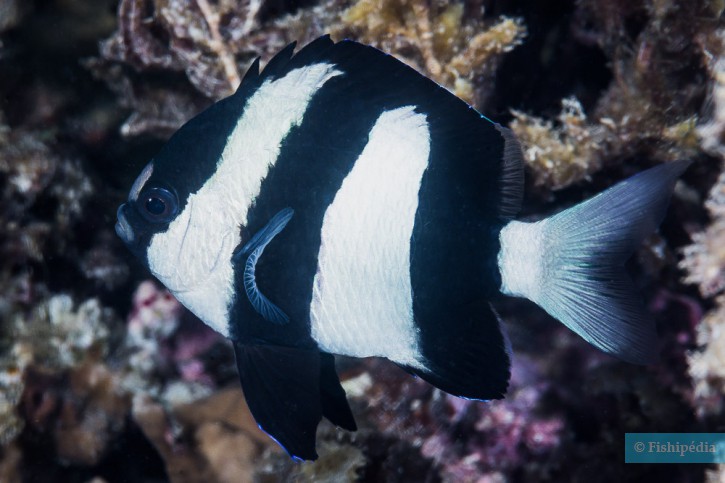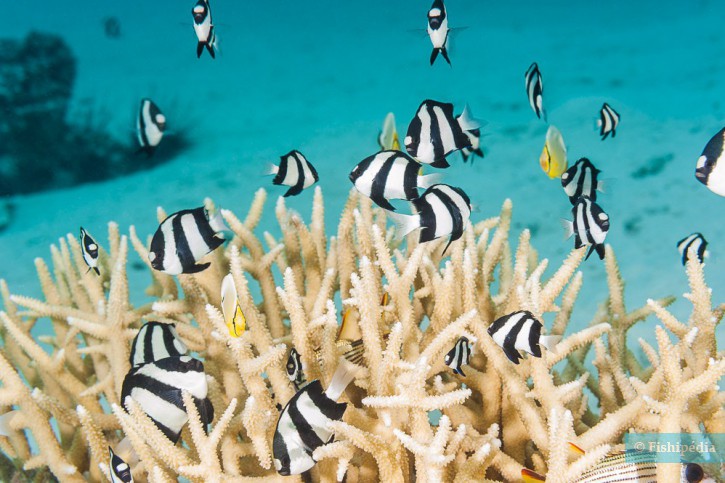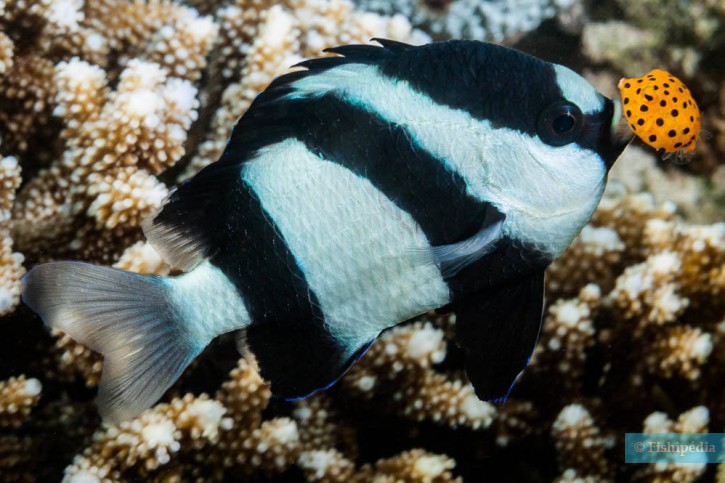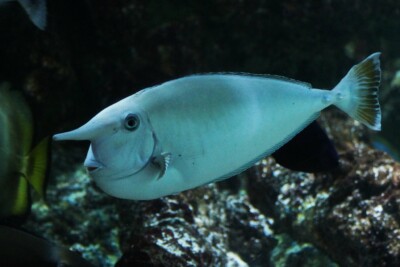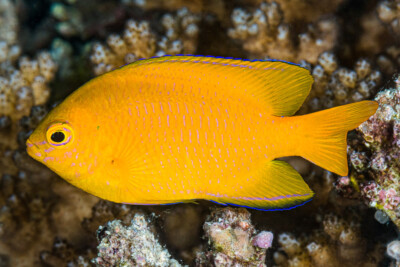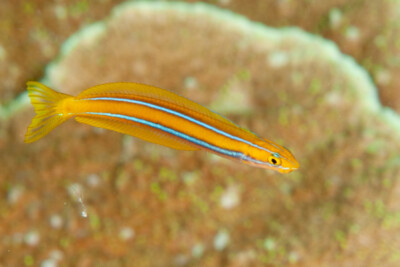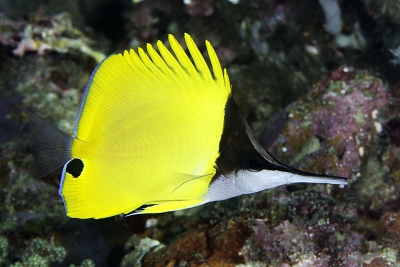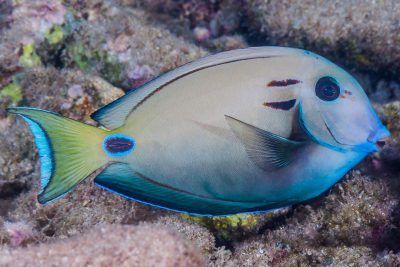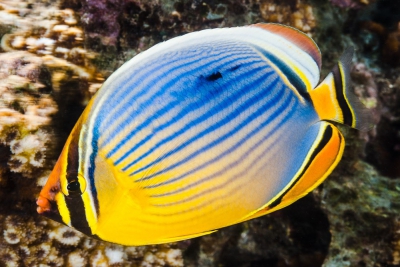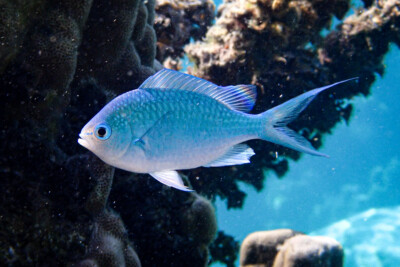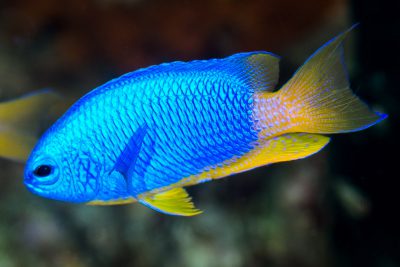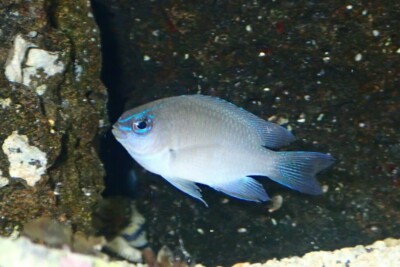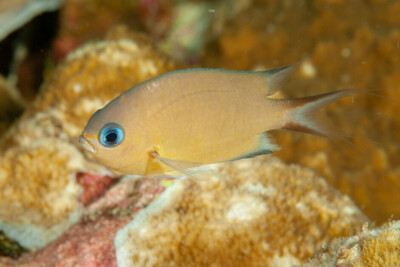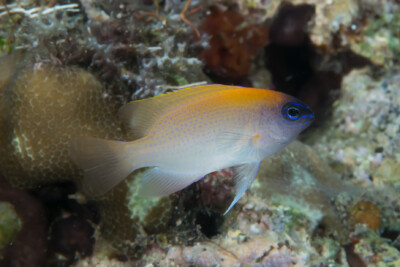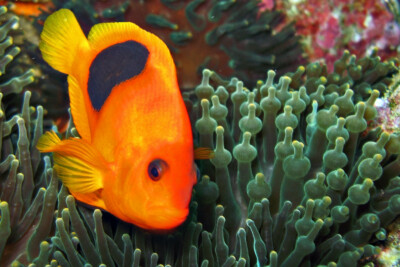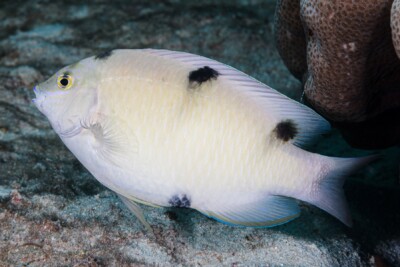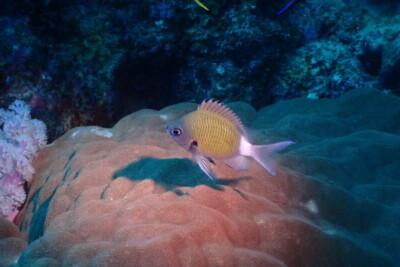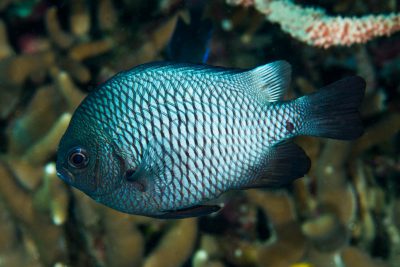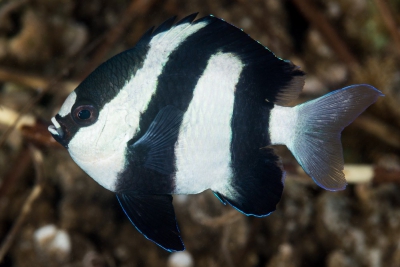whitetail Dascyllus
| Scientific name | Dascyllus aruanus |
|---|---|
| Descriptor | Linnaeus |
| Year of description | 1758 |
| IUCN category (World) | LC |
| Family | Pomacentridae |
| Genus | Dascyllus |
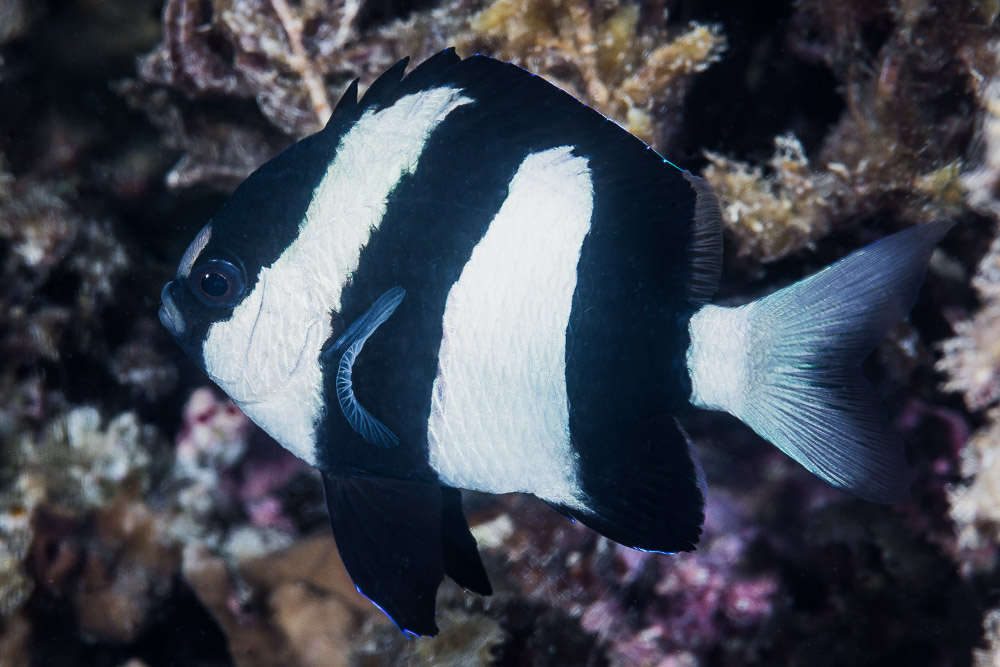

Introduction
Dascyllus aruanus, commonly known as whitetail Dascyllus, is a salt water fish.
This sheet is currently being prepared. The texts currently proposed come from our data model or are being drafted. To request priority for this content, you can write to us HERE.
Who is it?
Morphology
-
Average size6 cm
-
Maximum size10 cm
-
Longevity8 year
-
ShapeCircular
-
Patternvertical stripes
-
Average size6 cm
-
Maximum size10 cm
-
Longevity8 year
-
ShapeCircular
-
Patternvertical stripes
How to recognize This fish ?
The whitetail Dascyllus measures around 6 cm. The dominant males can however reach 10 cm. This fish is bicolore with a predominantly noir and blanc body. The also has noir and blanc vertical stripes.
Sexual dimorphism
The adult male is bigger than the female.
Behaviour & Life cycle
-
dietcarnivorous
-
Sociabilityliving in shoals
-
territorialYes
-
Way of livingdiurnal
The whitetail Dascyllus is a fish living in shoals naturally found near the bottom. This species is carnivorous .
Reproduction
-
Reproductionovipare qui pond sur substrat découvert
-
Hermaphroditeprotogynous
The whitetail Dascyllus is a fish ovipare qui pond sur substrat découvert. always born female. Growing up, individuals will change sex to become male, this is called successive hermaphroditism of the protogynous type. This fish protects its eggs from nearby predators.
Harmless species
This species does not represent any particular threats to humans when encountered in its natural environment.
Origin and distribution

What is its habitat?
Natural environment characteristics
-
Temperature25 - 29 °C
-
Depth0 - 20 m
Biotope presentation
The whitetail Dascyllus is most often found at a depth between 0m and 20m. However, it is not impossible to find this species at other depths.
Species of the same biotope
Fishkeeping
Not recommended
We do not recommend keeping this species in an aquarium. It has unpredictable needs which, if not met, generate significant stress, potentially leading to a shorter life expectancy, an interruption of its growth or the development of pathogens.
To go further
Sources & Contributions
Participation & Validation
The Fishipedia team and specialist contributors are committed to providing high-quality content. However, although the information comes from scientific sources or testimonials from specialists, the cards may contain inaccuracies.

Adrien Falzon

Aurélien Calas
Translation
Translation done with the valuable contribution of our translators, who make this information available to a wider audience. We sincerely thank them for their commitment.
Scientific partners
Tags
Species of the same family
Same genus
Species of the same biotope
